From the village to the city, then back again
I am Trang Vuong, 27 years old, born and raised in Phuc Sen - a land in Quang Hoa district, Cao Bang province, where many long-standing cultural traditions are preserved. In addition to famous craft villages such as Phia Thap incense village or Dia Tren paper village, Khao hamlet, where I was born, also has the traditional weaving and indigo dyeing profession of the Nung An people. This profession has existed for a long time, closely associated with the lives of many generations.
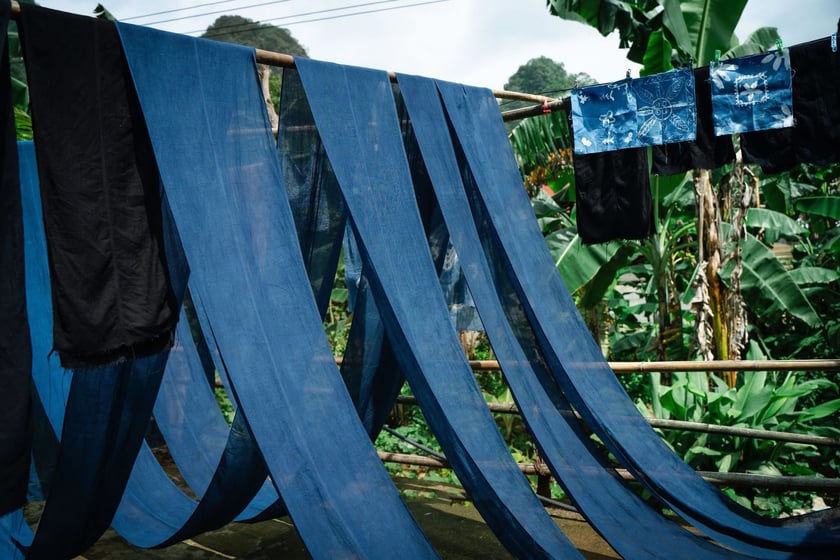

Weaving and indigo dyeing are traditional crafts that encapsulate the efforts and sophistication of highland women.
I studied tourism, had the opportunity to set foot on many lands, met many cultures. And it was from those trips that I gradually realized that my homeland has its own unique values, not inferior to any other place, just that few people still keep them, few people tell about them. From then on, I decided to return, to contribute a small part to preserve and promote the traditional profession of my people. For me, weaving and indigo dyeing are not just a way to make a living, but the soul of an entire community.
I decided to return to Phuc Sen in April this year and started learning the craft from the mothers and elders in the village. At first, I thought it was simple, but when I did it myself, I realized how difficult this job was. From spinning the thread, weaving the fabric, soaking the indigo to drying each batch of fabric in the sun, each step required perseverance and precision. The more I learned, the more I was drawn into that meticulousness. There were times when I almost forgot the time when I sat next to the fermenting indigo jar, smelling that pungent smell and feeling strangely familiar.


Having left her village to go to the city, Trang now returns to her hometown, following in the footsteps of her grandmother and mother in preserving the indigo fabric of the nation.
From white cotton to indigo woven from the earth, exposed to the sun
Indigo dyeing in Phuc Sen has been associated with the life of the Nung An people for hundreds of years. This is not the industrial indigo that can be bought from other places, but is handmade indigo, made entirely by hand: from planting indigo plants, soaking and fermenting, filtering residue, to collecting indigo extract, incubating and cultivating indigo, dyeing fabric and drying. Each stage requires time, effort and perseverance in the profession.
The Nung An people’s indigo weaving craft began with two things: cotton and indigo. Cotton is grown in the fields, and after harvesting, it is dried, the seeds are shaken off, and then spun into thread. Villagers use wooden looms to weave each row of fabric by hand. The finished fabric is then dyed.

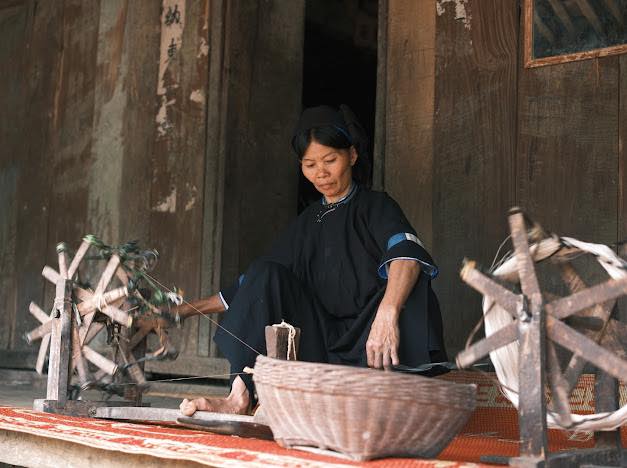
Indigo is a plant that takes almost a year to harvest. When the time is right, people cut the plant, soak it in a stone trough for two days and two nights to let it rot, creating indigo paste. This residue is filtered, then mixed with lime water, creating a mixture called indigo - the main ingredient for dyeing fabric.
The white cloth will be dyed with indigo for about a month. Every day, a small bowl of indigo paste must be added to the jar, stirring constantly. This must be done regularly to keep the indigo alive, so that the color penetrates deeply into each fiber of the cloth. When the cloth changes from white to blue, then dark blue to dark purple, the color is "ripe". But to achieve that color, the dye must be dyed over and over again eighty or ninety times, several times a day. It cannot be rushed, nor can it be done carelessly.
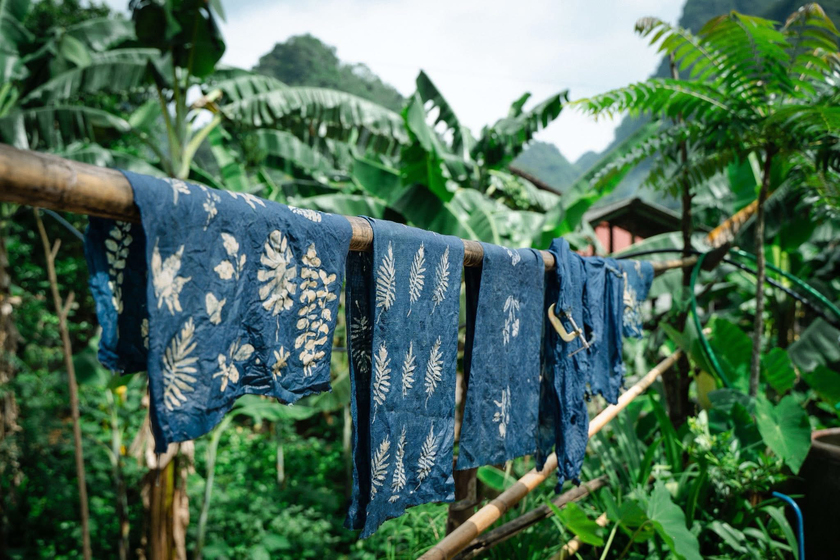
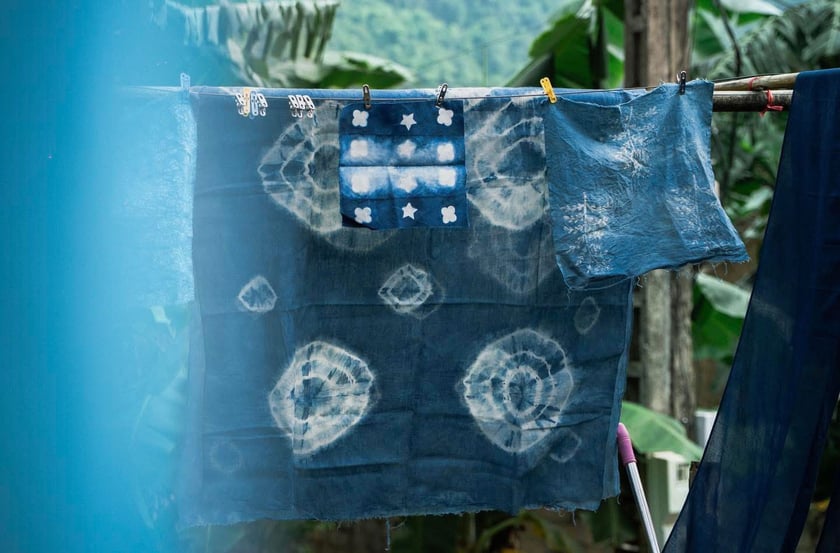
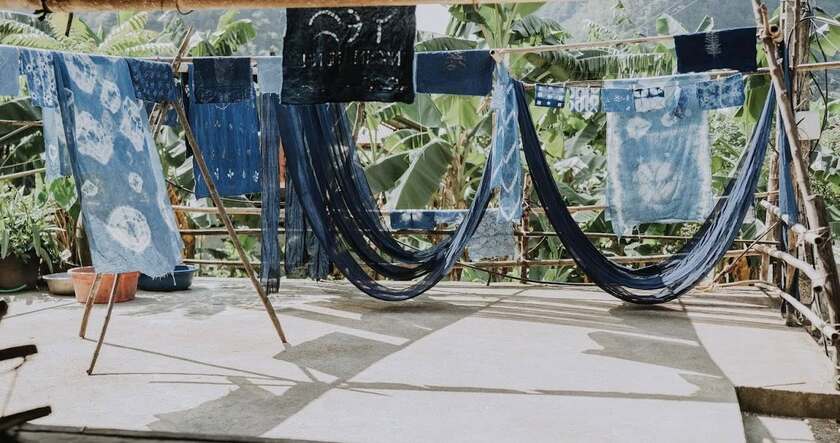
The indigo dyeing and fabric drying process takes about a month to produce a beautiful, standard indigo color.
On cloudy, damp days, I get impatient because the fabric doesn’t dry. If it doesn’t, I can’t dye it the next day. The weather is like an unpredictable partner to the indigo maker, either it’s favorable or it ruins the entire batch of fabric.
Phuc Sen indigo is also special because the blue color is deep, not too bright but durable, deep, and becomes more beautiful the more you use it. To maintain that color, the maker must be patient and understand the characteristics of each batch of indigo, each fabric, the humidity of the weather, and the speed of drying under the sun.
A traditional Nung An costume requires about 10 meters of fabric. Indigo fabric is sold for 100,000 to 150,000 VND per meter, but its much greater value lies in the effort and the story woven into it.


Phuc Sen Cham is also special because the blue color has depth, not too bright but durable, deep, and the more you use it, the more beautiful it becomes.
Preserve the color of the land, preserve the profession for the people
The old Phuc Sen commune has only one ethnic group living there, the Nung An. Through many ups and downs, the people here still maintain their profession: from forging knives, making incense to weaving indigo fabric. In the midst of the changing urban area, there are still more than 10 households continuing to practice the profession, mainly in small hamlets like Khao hamlet. For the Nung An, indigo fabric is not just for wearing. It is a wedding dress, a festival dress, a spiritual item. Someone said: "A beautiful indigo fabric not only shows the ingenuity but also reflects the moral qualities of a Nung An woman." Hearing that, I felt both proud and pressured, because the person who keeps the profession today not only weaves fabric, but also has to continue weaving that spirit.
I started experimenting with new products made from indigo fabric: handbags, scarves, skirts, shirts - items that are familiar to young people. I also built a small space in the backyard so that visitors could come, touch the fabric themselves, try dyeing once, smell the real indigo scent to understand the craft not by sight, but by experience. I believe that if the craft is maintained properly and constantly innovated, the handmade products will not become outdated. On the contrary, they carry a story, and whoever holds the product also holds a part of Phuc Sen's memory.

Visitors come to experience spinning and weaving at Trang's home.
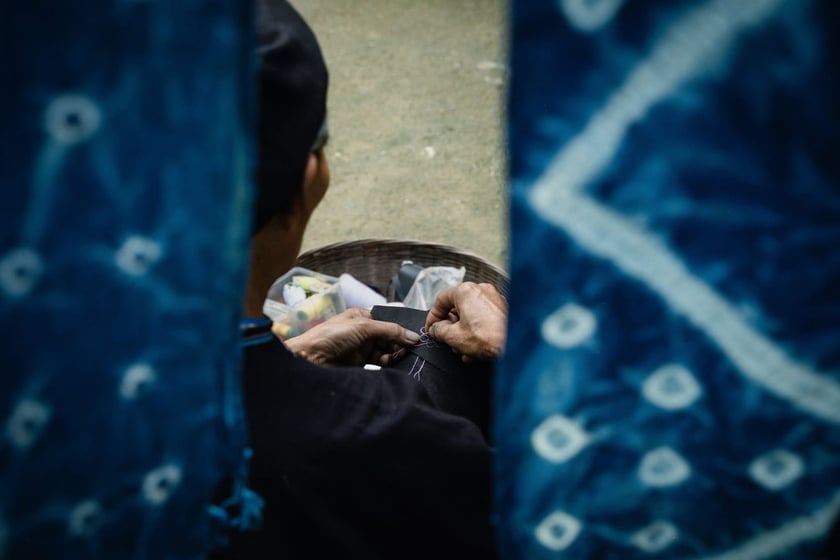
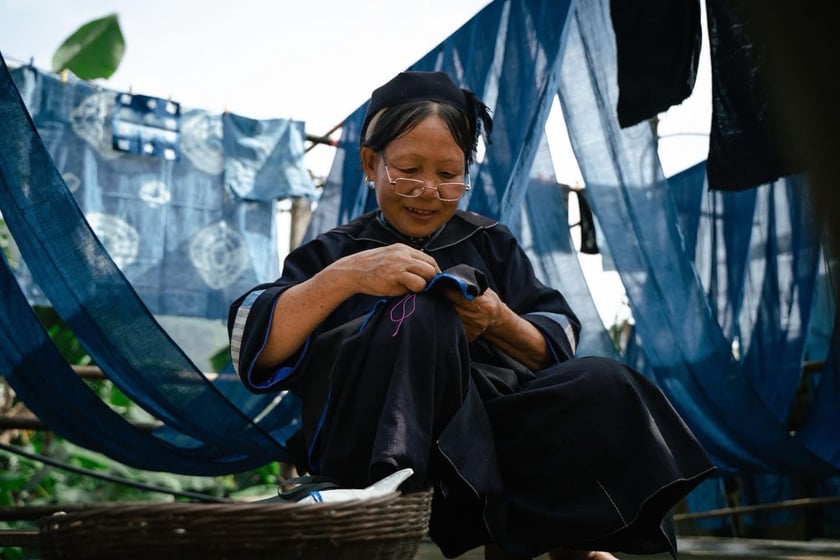

By experimenting with new products such as hats, handbags... Trang hopes the story of indigo fabric will be conveyed to visitors from far away.
Life here does not have the usual coffee shop after work, nor the brightly lit glass buildings. But I have a garden, indigo plants, and a small porch for dyeing and drying fabrics. There, I still repeat seemingly simple tasks every day, but they are weaving a journey: the journey to preserve the indigo of my homeland.

































